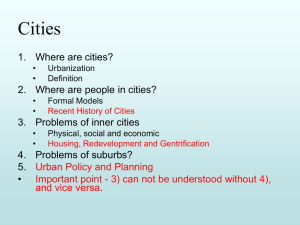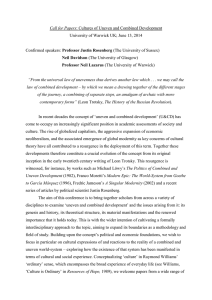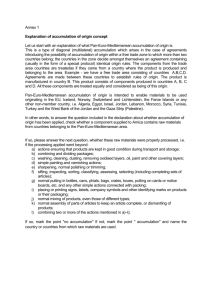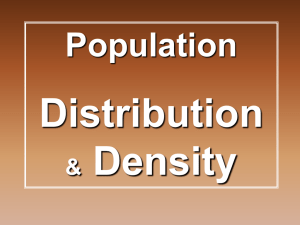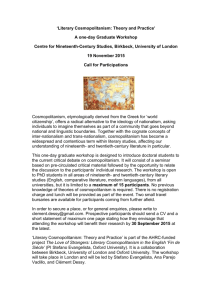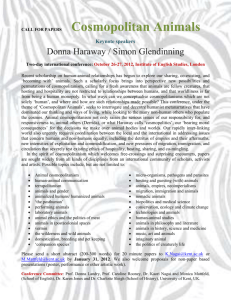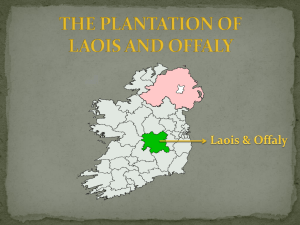Meeting 7, Mar 6
advertisement
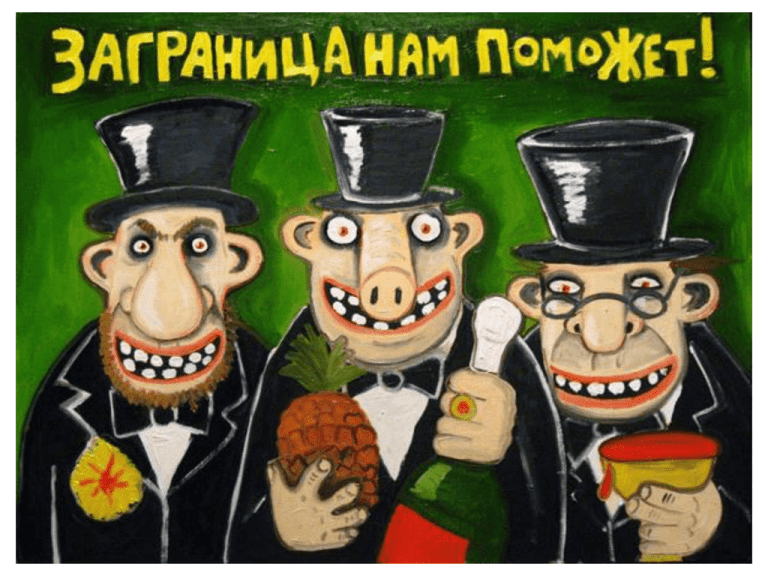
Globalization, Mobility, Splintering Urbanism Social Analysis of Urban Everyday Life Meeting 7 (March 6, 2014) Nikita Kharlamov, AAU Lefebvre: The Urban Revolution (1970/2003) • Synchronic view: Levels of organization or urban society: G-global (power relations), M-mixed (city), Pprivate (habiting). M-level connects the concrete site with the global relations. • Diachronic view: urban process, where the essential part of the ‘urban’ is centrality. This process is dialectical, and it follows the logic of creation and destruction. • “The city brings together whatever is engendered somewhere else, by nature of labor… What does the city create? Nothing. It centralizes creation.” (p. 117) Global / World City • • • • • • • World City (Hall, The World Cities, 1966), Global City (Sassen, The Global City: New York, London, Tokyo, 1991) – a key urban node that concentrates command and control function in the global economy. The basic idea: a global city is a central node shared between multiple distinct networks (economic, transit, political, cultural, etc.), and exercising c&c function by virtue of this centrality. Underlying processes: urbanization (size/scale); concentration of capital (uneven development); concentration of finance (postindustrial economy – 1); innovation, entrepreneurialism, creative class, culture industry (postindustrial economy – 2); migration, diversity, conflict (cosmopolitanism). Recall Simmel (1903): the Metropolis! Iconic global cities: New York, London, Tokyo. Key question: scale of influence (global, regional, sub-regional). Moscow is commonly classified as ‘regional global city.’ Key criticism / warning: ‘command and control’ implies too much ‘totality,’ unity, capacity for agency to what in reality is a fairly diffuse, loosely organized network of different agents such as corporations, classes, government, etc. (R. G. Smith, Beyond the global city concept and the myth of ‘command and control’, 2014) Uneven Development • Originates in Karl Marx’s work on capital accumulation and in his observation that accumulation of wealth coexists with accumulation of misery. • Spatial fix to crises of overaccumulation of productive capacity and labor (Harvey, The Limits to Capital, 1982): capital moves elsewhere. Example: the push on China to raise its middle class consuming power to create new consumers for global exports. • Rent gap (Smith, Uneven Development, 1984): the gap between actual and potential land rent realizable explains why developers flock to particular locations and stimulate redevelopment and gentrification. Example: gentrification of Harlem, practices of redevelopment and ‘creative destruction’ of old city blocks in Moscow. Globalization, Hybridity, Cosmopolitanism • Advanced travel and communication technologies coupled with population explosion and increased porosity of political boundaries lead to permanent and temporary migration, commuting, business and leisure travel, tourism, as well as global distribution of commodities and information. • Multiculturalism and hybridity (Bhabha, The Location of Culture, 1994) (think back to our discussions of ethnic neighborhoods and visual semiotics of culture) • Conflict and tension Possible Themes for Photography • Global brands in local contexts • Spaces and places of mobility • Varieties of human mobility: business travel, tourism, voluntary and forced migration • Architectural manifestations of global cities • Uneven development (spatial fixes, rent gaps) • Loci of global finance • Command and control of global economy
